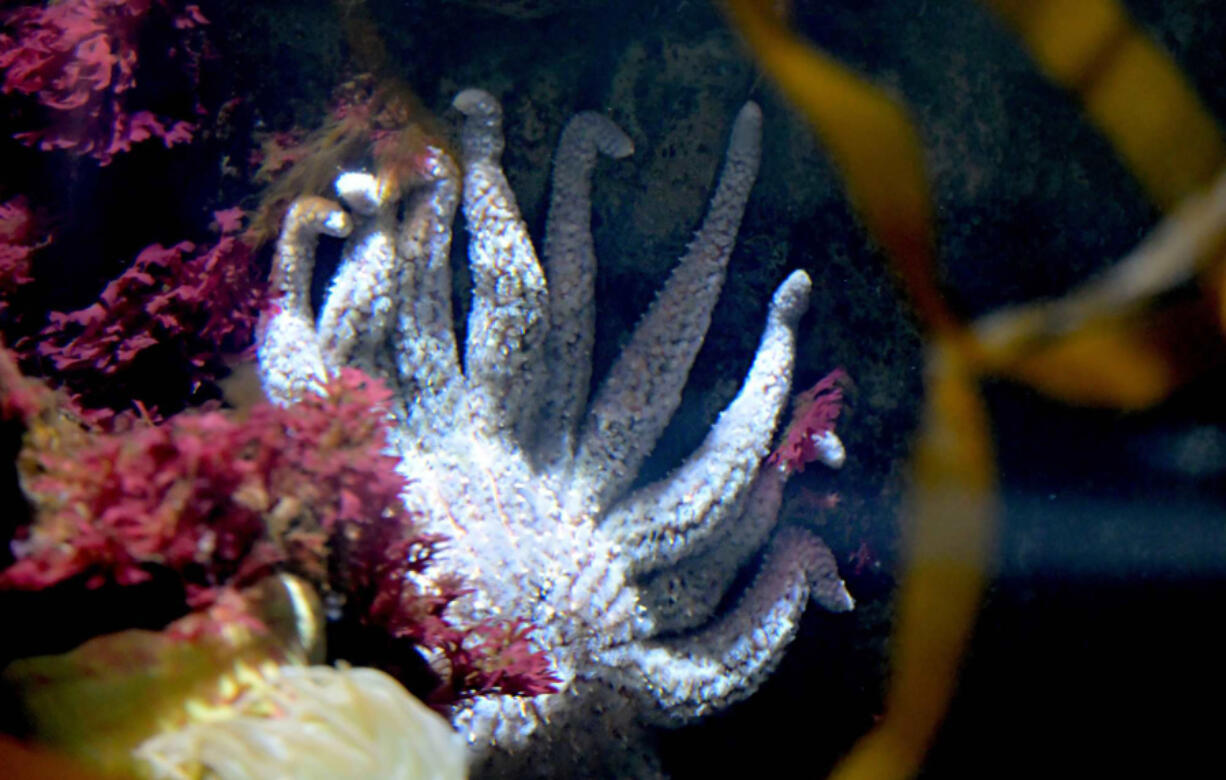There are so few sunflower sea stars remaining, researchers don’t think there are enough for them to find each other on their own to reproduce — so the species is getting a helping hand from humans.
The Aquarium of the Pacific in Long Beach and the Birch Aquarium at Scripps Institution of Oceanography in San Diego teamed up with several other labs and scientists to successfully spawn several sunflower sea stars recently, giving hope for the critically endangered species that was nearly wiped out when a sea star wasting syndrome swept the West Coast about a decade ago, killing billions.
“It has been an amazing few years of collaborating and learning that led to this spawning. We have a huge team behind us, both national and international, working toward the conservation of the sunflower sea star,” said Jenifer Burney, Aquarium of the Pacific senior aquarist and co-chair of the Association of Zoos and Aquariums SAFE — Saving Animals From Extinction — Sunflower Sea Star Program.
The disease that decimated the population to near extinction from 2013 to 2015 is still a mystery, baffling marine scientists from Baja to British Columbia, but especially off the southern and central California regions. Billions of sea stars turned to globs of goo, melting and dying in the largest known die-off of the species.
A range of starfish species — including ochre, mottled, leather, rainbows, six-armed stars and sunflowers — were impacted. Some species are starting to rebound, with occasional sightings off the coast — but one in particular, the sunflower, has not been showing hope.
“We call them ‘functionally extinct,’” Burney said. “We don’t think there’s enough of them here to find each other to reproduce and rebound. We haven’t seen them in Southern California for years. For whatever reason, it really hit the sunflower stars the hardest.”
The sunflower sea star looks a lot different from the typical five-arm species, she said. They can have two dozen arms and grow so large that their middle part, the disk, can span several feet.
“I think when people see them, they are blown away and don’t realize what they are looking at because they don’t realize they are sea stars,” Burney said.
Their absence is impacting the ocean ecosystem. They diet on sea urchins, but with their populations depleted, the urchins have boomed. That surge in urchins is impacting kelp, which is already experiencing stress from warmer-than-normal waters.
In 2019, the University of Washington Friday Harbor Laboratories had the first successful spawning of the sunflower sea star, fertilizing and growing it in a laboratory.
To expand on that success, SAFE was created, a collaboration that included not only the Aquarium of the Pacific and Birch Aquarium, but also the California Academy of Sciences, San Diego Zoo Wildlife Alliance and Sunflower Star Laboratory.
The group studies the disease and spawns the species in an aquaculture setting, early steps to help the sunflower sea star rebound.
Melissa Torres, aquarist at Birch Aquarium, called the successful spawning and cross-fertilization “a huge step forward in the conservation of the species.”
“They are gone from their natural habitat,” she said. “Knowing we can not only spawn, but successfully fertilize eggs, means we can create a healthy and diverse population in human care even though they may be gone in the wild.”



